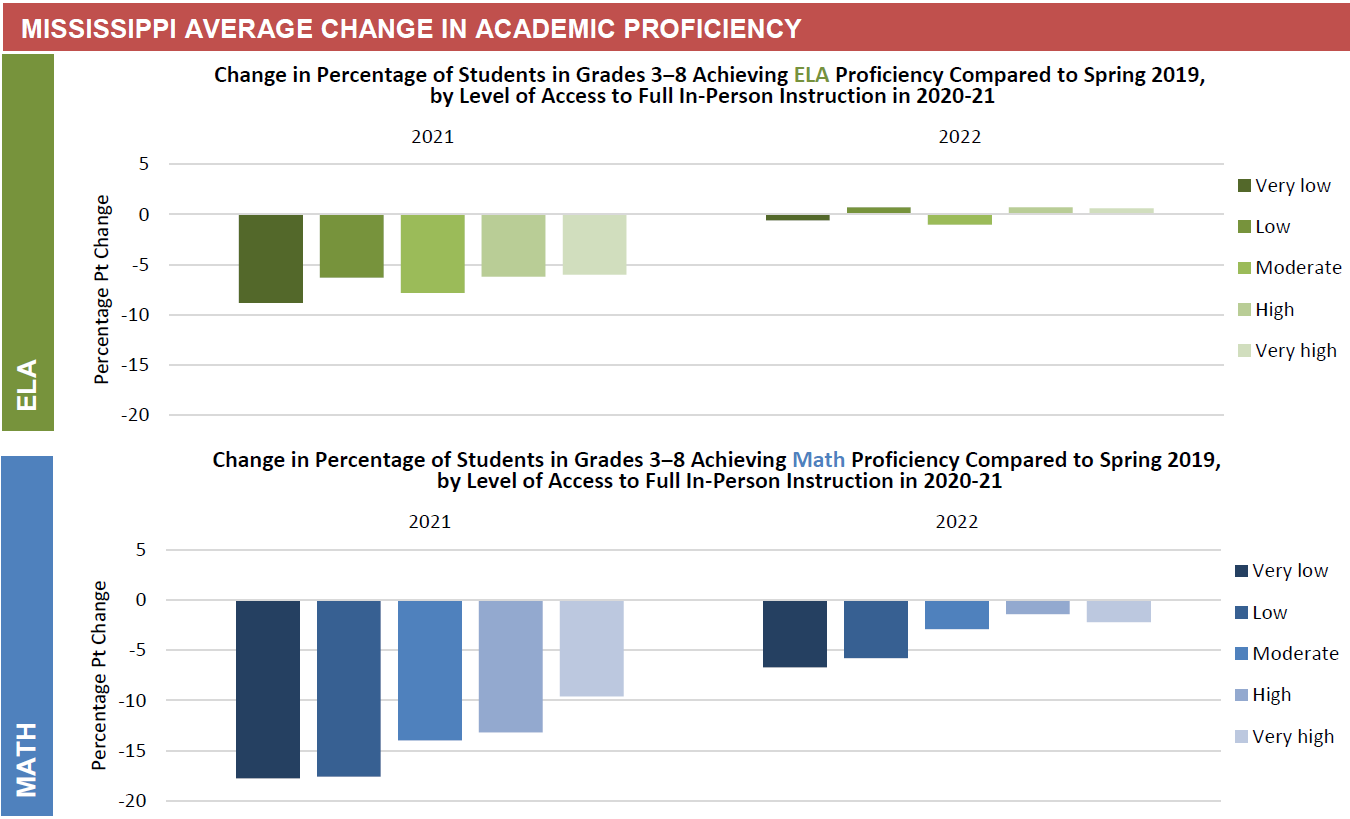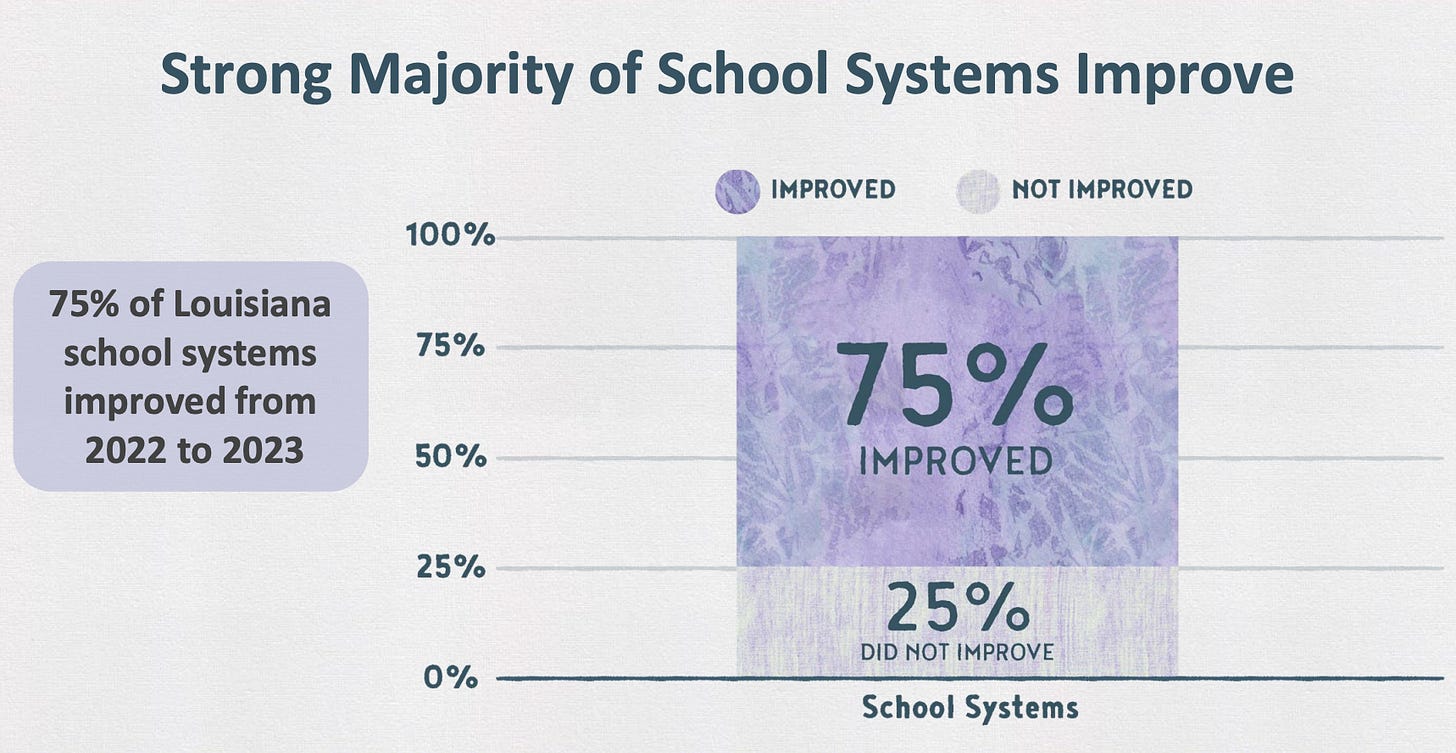The Education Policy Hotlist
Top news in U.S. education policy for the week of August 14th - 18th
Welcome back to the Education Policy Hotlist!
This is your weekly source of critical education policy issues. This issue covers cybersecurity initiatives, student outcomes data, and opportunities to improve teaching and data systems.
My family had fun this summer. We celebrated birthdays, took road trips, played in soccer tournaments, and ate tasty food. The big kids are off to their annual sleep-away camp. We’ve kept this tradition for years, and I’m proud of their adventurous spirit.
I appreciate your suggestions for the Hotlist. If you have any resources, please send them to me or tag #EdPolicyHotlist. I’ll include them in the next issue.
I’d love your support for these SXSWEdu Panels that are worth your vote. They cover emerging topics in education policy:
Common Ground: Moving Beyond Partisanship in K-12 Reform (P16 Partners)
Scaling Pathways Through Competency-Based Approaches (KnowledgeWorks)
The Time Is Now: A New Playbook for Education Leadership (Women Leading Ed)
Please let me know if you have other panels that we can vote for.
Thank you for being part of this enthusiastic education policy community. Now, let’s get into the Hotlist!
Data on Student Learning
The Covid-19 School Data Hub released new data and a newsletter
The project aims to provide data and analysis on the results of standardized tests across the U.S. The newsletter will provide more public information and dialogue about state test scores, especially in the context of the pandemic and its impact on education.
Indiana’s new data dashboard will help parents
The dashboard is designed to provide a clear and comprehensive data story about their child’s school and district. It shows how students perform on various indicators linked to their future success, such as literacy, math, graduation, college enrollment, and career readiness. By using the dashboard, parents can:
Understand the strengths and areas of improvement of their child’s school and district.
See how their child’s school and district prepare students for life after high school.
Find out what opportunities and supports are available for their child at their school and district.
Engage in meaningful conversations with their child, teachers, and school leaders about their child’s education and goals.
Advocate for their child’s needs and interests at their school and district.
A.I. and Education Technology
How the Biden-Harris Administration plans to unleash America’s cyber talent
The Biden-Harris Administration launched the National Cyber Workforce and Education Strategy (NCWES), a comprehensive plan to address the immediate and long-term needs of the cyber workforce in the U.S.
Merlyn creates education-specific AI models
Merlyn is a company that makes AI models that can generate high-quality content for teachers and students. They train their models on curated and vetted data sources, and they aim to be trustworthy, ethical, and transparent.
Why is this important? Some ed-tech leaders have urged ed-tech companies to stop using large language models, which are general-purpose and data-hungry, and instead use models trained explicitly for their content and goals. Merlyn is responding to this call by developing a new approach to language modeling for education.
School Cybersecurity
Department of Education Launches K-12 Cybersecurity Resilience Efforts
The Department of Education announced several initiatives to strengthen the cybersecurity of K-12 schools, including establishing a Government Coordinating Council and releasing three K-12 Digital Infrastructure briefs. These efforts aim to protect schools from cyberattacks and support them in preparing for, responding to, and recovering from such incidents.
Learn more details. FCC Chairwoman Jessica Rosenworcel proposed a pilot program to invest in cybersecurity services for eligible K-12 schools and libraries. The program is part of her Learn Without Limits initiative to modernize the E-Rate program, which funds internet connections in schools and libraries.
Enrollment and Choice
Residential segregation significantly constrained WCPSS’s desegregation initiative
A new Brookings piece explains how school choice policies can support or hinder district-led efforts to foster diverse schools, using data from three districts that have implemented different choice programs. The authors examine how the design and implementation of choice policies affect families’ school preferences and decisions and how racial preferences and anti-Black racism shape how parents navigate choice contexts.
How districts can manage school closures better to minimize the negative impact on students and staff
Chad Aldeman writes about how some districts often need help with school enrollment adjustment inertia, meaning they delay closing under-enrolled schools until they have to do it on a large scale. Waiting for these conversations and decisions can be disruptive and harmful for students, families, and communities.
Why is this important? The pandemic has eroded the confidence of many families in schools. The challenges of low enrollment and school closures may further alienate them.
Evidence of Student Success
Changes in school climate during pandemic school closures
The study analyzed how school climate changed during the pandemic using data from a voluntary school climate survey administered by the Pennsylvania Department of Education. The study found that students and teachers reported more positive perceptions of school climate in the 2020/21 school year, when most schools used hybrid or remote learning, compared to the 2018/19 and 2021/22 school years.
Why is this important? Some districts also observed improved school climate for some students during the pandemic. They speculated that this might be related to the “slow start” strategy they adopted at the beginning of the year and before holiday breaks, which allowed more time and attention for engagement.
Alabama students make some gains in math, science, and reading skills
Results from the 2023 Alabama Comprehensive Assessment Program (ACAP), illustrate that Alabama students improved math, science, and reading proficiency compared to the previous year. These improvements may be part of new initiatives like the Alabama Math, Science, and Technology Initiative (AMSTI) and the increased funding for education.
Louisiana students show recovery from pandemic slump on LEAP test
Louisiana students improved their proficiency rates in critical subjects by two percentage points in the 2022-23 school year, according to the results of the annual LEAP test.
Postsecondary Pathways
Wisconsin aims to increase college-goers
Republican lawmakers in Wisconsin would make the University of Wisconsin automatically accept the top 5% of Wisconsin high school graduates.
Get Schooled releases their 2022-23 impact report
The national non-profit organization dedicated to helping young people get to college reached over 2.5 million students in 2022-23. They highlight their ability to provide personalized support and guidance, launch new, responsive initiatives alongside state and national partners, and increase student outcomes and engagement.
Teacher Workforce
A Report on Teacher Diversity Policies
The National Council on Teacher Quality (NCTQ) report examines the policies and investments that states use to increase their teacher workforce's diversity. It covers four key areas: building the pipeline of future teachers of color, offering incentives to attract candidates of color, supporting, retaining, and developing teachers of color, and using data to set goals and track progress. The report finds that most states have room for improvement in addressing the gap between the growing number of students of color and the smaller share of teachers of color in public K-12 schools.
New moves from the National Center for Grow Your Own
The National Center for Grow Your Own announces the first-ever National Convening on Registered Apprenticeships in Teaching, adds new districts to its network, and submits national guideline standards for the K-12 teacher occupation to the U.S. Department of Labor.
Why is this important? The U.S. Department of Labor and the U.S. Department of Education issued a joint letter to encourage states to establish high-quality paid Registered Apprenticeship programs for teaching. The letter outlines the benefits of such programs, such as providing on-the-job learning experiences, addressing teacher shortages, and diversifying the teacher workforce.
State Education Policy
Michigan Gov. Gretchen Whitmer created a new state agency called MiLEAP
The agency will help families access affordable child care, free pre-K, after-school programs, career options, and higher education. The agency will also transfer some functions from the Michigan Department of Education and work with the elected State Board of Education.
California joins 40 states that require dyslexia screening
In July 2023, California passed a law requiring schools to screen kindergarten through second-grade students for dyslexia. California is one of the last states to adopt such a mandate despite many students struggling with reading.
Federal Relief Funds
Struggles to spend federal relief funds
The Memphis-Shelby County Schools, the largest district in Tennessee, has received almost $776 million in federal relief funds to support its students and staff during the pandemic. The community has faced challenges and changes but has also improved its communication and transparency with parents, teachers, and the public.
How state funding methods shape district staffing decisions
A new Brookings piece from Chad Aldeman explains how school districts in California and Washington, which have similar funding levels but different funding mechanisms, make staffing decisions. The analysis finds that Washington’s resource-based funding model, which allocates funds based on assumptions about staff needs and salaries, leads to more uniform and teacher-heavy staffing patterns across districts. In contrast, California’s student-based formula, which funds districts based on the number and types of students they serve, allows for more flexibility and variation in staffing choices.
State Longitudinal Data Systems
DQC says that everyone should have access to tailored student data
This DQC article prepares a vision for state data systems that provide people with access to education and workforce pathways data, which can help them make informed decisions and improve outcomes.
NCES reports on state’s data capacity via new survey
A new report summarizes survey results about statewide longitudinal data systems from all 50 states. The survey responds to the following questions:
What K–12 data types are included in the statewide longitudinal data system (SLDS)?
What is the capacity for linking K–12 student data in the SLDS to other data? How are the data linked?
Are there data dictionaries published publicly? Are data aligned to the Common Education Data Standards (CEDS)?
How do states and territories use data for reporting and decision-making?
ICYMI
Turnaround for Children, now the Center for Whole-Child Education, joins Arizona State University
Together, these partners aim to advance learner-centered education and transform educator practice, leadership practice, systemic performance, and knowledge generation.
Dr. Christine M. T. Pitts is an executive leader, advancing public policy for social impact. Follow her on LinkedIn, Instagram, and Twitter for updates.












AMSTI, the Alabama Math, Science, and Technology Initiative, is not new. It’s been around for at least a decade. It was modeled - somewhat - on the Alabama Reading Initiative (ARI) which was effective in the early part of the last decade until it was altered in design and achievement slumped. Internal studies showed that those students who went not enrolled in AMSTI outperformed those in the program, accounting for socio-economic factors.